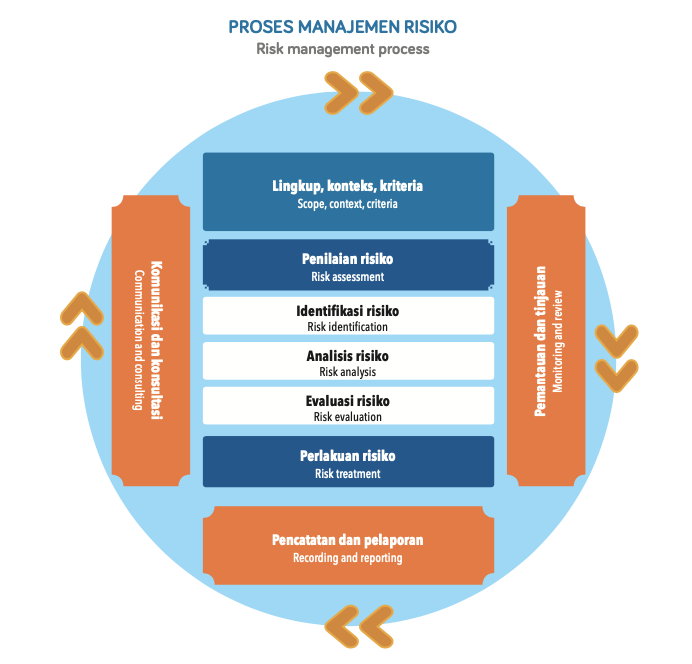STRUCTURE AND MECHANISM OF CORPORATE GOVERNANCE
RISK MANAGEMENT SYSTEM
The risk management process involves systematic application of policies, procedures and practices to communication and consulting activities, context setting, and risk assessment, treatment, monitoring, review, recording and reporting.

Communication and Consultation
Communication and consultation helps the risk owner in understanding the risk, as the basis for making decisions and the reasons for taking required actions. Communication will increase awareness and understanding of risk, while consultation includes feedback and information obtained to support decision making. Coordination must be factual, timely, relevant, accurate and understandable. Information exchange must pay attention to the confidentiality and integrity of information, including individual copyrights.
Scope, Context and Criteria
The purpose of establishing the scope, context and criteria is to adapt the risk management process, enable effective risk assessment and adequate risk assessment. Scope, context and criteria include determining the scope of the process and understanding the external and internal context.
Risk Assessment
Risk Assessment is a comprehensive process of risk identification, risk analysis and risk evaluation. Risk assessment should be carried out in a systematic, iterative and collaborative manner based on the knowledge and views of stakeholders.
